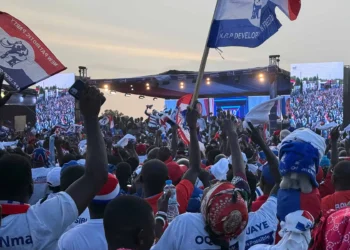Defending its daily foreign exchange rates publications, the Central Bank of Ghana (BoG) has disclosed that the rates published on its sites are just indicative exchange rates collected and collated from the commercial banks, and offered to customers as average rates.
Many individuals have criticized the Central Bank for the publication of low foreign exchange rates which does not reflect the current retail market rates. According to these individuals, most of the rates publicized on BoG’s websites tend to very lower than the market rates.
Giving explanations for the reasons of rate differences, the First Deputy Governor of Bank Of Ghana, Dr. Maxwell Opoku Afari, during Public Accounts Committee meeting explained that the rates from the Central Bank are indicative rates, but not transactional rates.
“The Bank of Ghana does not have the Bank of Ghana rate as we speak. So, what is being twitted is our indicative rates, that is transaction rates collected from commercials banks at the end of the previous day at 3pm, weighted average based on transaction volume and then published for the benefit of the general public.
“The difference you see from the commercial banks is that when you go to your bank this morning, they would have published an indicative rate but not a transaction rate. So when you see Gh¢13 or Gh¢12 , the bank is saying that as you come to my bank, you may get this rate but depending on the type of transaction you want, you may even get it Gh¢10 or Gh¢11.”
Dr. Maxwell Opoku Afari
Dr. Opoku-Afari pointed out that there is a huge margin between the indicative rate and the previous day transactional rate. “So you look at the indicative rate and you compare it to their previous day’s transactional rates, you will see a huge margin. The transaction rate is not different from what Bank of Ghana publishes,” he said.
$1 Now Exchanges For ¢12.50 As Cedi Continues To Appreciate Against US Dollar
Despite the slight difference in the transactional and indicative rate, the Ghana cedi is noted to have continuously improved against the US dollar today February 3, 2023, selling at ¢12.50.
This is about 3.1% gain to the American ‘greenback’ since the beginning of this week (January 30, 2022). Between February 2, 2023 and February 3, 2023, the cedi gained about 10 pesewas in value to the world’s powerful currency.
Some market operators have described the cedi’s performance against the dollar in particular as surprising since the country’s reserves have fallen significantly to about 2.0 months of import cover, whilst its Net Foreign Asset is also negative.
However, the significant progress made by the government on the Domestic Debt Exchange Programme (DDEP) could be the rationale behind the cedi’s recent performance.
This is assuring investors that the government is committed to bringing the country’s debt to a sustainable level, and subsequently building a robust fiscal economy.
A successful DDEP will pave way for an International Monetary Fund support programme, which some research outfits believe Ghana will secure the programme by the first quarter of 2023.
The cedi gained a marginal 0.78% value to the American greenback last week to trade at about ¢12.85 to one US dollar. The Central Bank during that period sold about $22 million on the spot market to help tame the corporate demand. However, in January 2023, the local currency recorded a little over 17% depreciation to the US dollar.
Meanwhile, the local currency is still selling at ¢15.50 and ¢13.50 to the pound and the euro respectively.
Read Also : GCB Bank Honors Its Pledge To UCC With A Cheque Of GH¢300,000




















